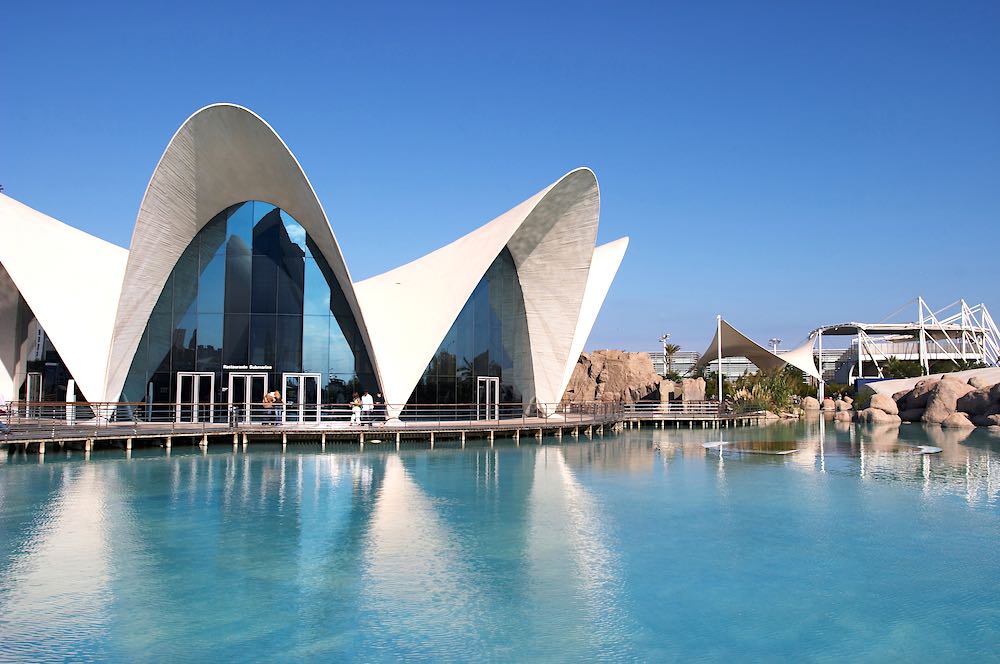Oceanogràfic Valencia: Exploring Europe’s Largest Aquarium
Nestled along the picturesque coastline of Valencia, Spain, Oceanogràfic stands as a magnificent testament to the beauty and wonder of the world beneath the waves. As the largest aquarium in Europe, Oceanogràfic is a sprawling marine complex that offers visitors an opportunity to embark on a mesmerizing journey through diverse aquatic ecosystems. In this article, we will explore the magic of Oceanogràfic in Valencia, delving into its rich marine life, immersive exhibits, and its vital role in conservation and education.
A Glimpse into Oceanogràfic’s History
Oceanogràfic Valencia first opened its doors to the public on February 12, 2003, as part of the broader City of Arts and Sciences complex. Designed by the renowned architect Santiago Calatrava, Oceanogràfic’s stunning architecture harmonizes with its coastal surroundings. The complex is a fusion of art and science, with a vision to inspire awe and appreciation for marine life while also serving as a hub for conservation research.
Diverse Aquatic Ecosystems
Oceanogràfic boasts a remarkable variety of aquatic environments, each carefully curated to mimic the natural habitats of its inhabitants. Visitors can explore these ecosystems through a series of interconnected buildings, offering a comprehensive view of marine life from around the globe. Some of the most captivating exhibits include:
- Mediterranean Sea: As Valencia is located on the Mediterranean coast, the aquarium’s Mediterranean habitat showcases local marine species, such as seahorses, sea turtles, and colorful fish.
- Tropical Seas: This section transports visitors to the vibrant coral reefs of the Red Sea, where they can encounter exotic fish, vibrant corals, and even reef sharks.
- Arctic and Antarctic: A visit to Oceanogràfic wouldn’t be complete without a glimpse of the Arctic and Antarctic ecosystems. Here, visitors can marvel at playful penguins, majestic beluga whales, and the elusive polar bear.
- Oceanic: This enormous tank houses some of the ocean’s most awe-inspiring creatures, including giant manta rays, sharks, and massive schools of fish. It’s a mesmerizing display of marine biodiversity.
- Wetlands: This exhibit showcases the importance of coastal wetlands and the various bird species that call these environments home.
Conservation and Research
Oceanogràfic Valencia plays a vital role in marine conservation and research efforts. The facility is involved in numerous initiatives aimed at preserving endangered species, protecting marine ecosystems, and raising awareness about the threats facing the oceans. Researchers at the aquarium study marine biology, behavior, and reproduction, contributing valuable data to global conservation efforts.
Education and Outreach
In addition to its conservation efforts, Oceanogràfic is dedicated to educating the public about the importance of marine ecosystems and the need for conservation. The facility hosts educational programs, workshops, and events for visitors of all ages, making it a fantastic destination for families, students, and marine enthusiasts alike.
Conclusion
Oceanogràfic Valencia stands as a testament to the wonders of the underwater world and the urgent need to protect it. Its immersive exhibits, commitment to conservation, and dedication to education make it a must-visit destination for anyone interested in marine life and ocean conservation. As Europe’s largest aquarium, Oceanogràfic continues to inspire awe, wonder, and a deep appreciation for the beauty and fragility of our planet’s oceans.





